|
|
Research
and text by Rudolf A. Bruil. Page
first published on the web on August 11, 2010.
|
Concert Hall Society, Inc., New York, and Musical Masterpiece Society
As early as 1950, Concert Hall Society, Inc., advertised in Schwann Long Playing Record Catalog, the new monthly publication for music listeners and record collectors published by W. Schwann (William). Initially the advertisements were on half pages but from December 1950 on these were full page ads on the first page of the catalog. The ads say that Concert Hall is located at 250 West 57th St, New York 19, NY. Concert Hall was the record company of two brothers, Samuel and David Josefowitz, two well educated people - David studied the violin. Early Earnings Eric
Goldberg writes: "I have several records which were derived from
Concert Hall Society and issued by The Record Hunter, a store in NYC on
5th Ave between 42 and 43 Streets.
In
the June 1952 issue of Schwann Long Playing Record Catalog, a full page
advertisement of the Handel Society appeared instead of the Concert Hall
ad. The Handel Society was located at the same address and was a sister
label of Concert Hall and was of course maintained by the brothers Samuel
and David Josefowitz. Chamber Music Society Licensed by Concert Hall Society
"Shellac" Recordings Concert
Hall existed already in the 78 RPM shellac era. First Editions The
78 RPM records are not too many as David and Sam Josefowitz had just started
their company (mail order business) and the listings in the Gramophone
Shop Encyclopedia of Recorded Music (1948) are of the first year
of the business. What is different is that the company will turn out only
2,000 copies of each album as it presses the records directly from the
master matrix, eliminating the "mother" and "stampers"
as was reported by Listings The
recordings are
not easily spotted in the Gramophone Shop Encyclopedia of Recorded Music,
1948 edition. Various Artists Pianist
Rudolf Firkusny apparently left VOX to make
records for Concert Hall before he switched to Columbia and to Capitol
in the LP era. He is the soloist in Concertino for Piano, Strings and
Wind Instruments (Janacek) on 4x 12" discs, Reference B10. Shura
Cherkassky, who recorded Glinka, Ljadov, Medtner, Prokofiev, Shostakovich,
Tchaikovsky and Liszt for the VOX label, could now be found on 4 x 12"
CH-AM performing Piano Concerto No. 2, Op. 44 of Tchaikovsky with Jacques
Rachmilovich and the Santa Monica Symphony. This recording was
later issued on LP with reference CHC-3. Cherkassky's recording would
later be replaced in December 1951 (according to the December 1951 edition
of Long Playing Record Catalog) by the recording of Noel Mewton-Wood and
Walter Goehr on CHS 1125. You can listen to a sound clip of pianist Noel
Mewton-Wood and Walter Goehr performing Tchaikovsky on |
|
|
There is also pianist Ray Lev who recorded Brahms's Sonata No. 1 and Two Chorale-Prelude Op. no. 122 issued on CH-A7. From her hands are also Prokofiev's Children's Pieces (CH-AC) and Schubert's Unfinished Sonata in C Major (from 1825) on 4x 12" discs (CH-B3). Russian cellist and Casals pupil Raya Garbousova (Garbusova) had been a Victor artist but now she recorded for Concert Hall. She is the soloist in Samuel Barber's "Capricorn" Concerto with the Saldenberg Little Symphony (A4). She plays Barber's Cello Sonata accompanied by Erich-Itor Kahn (B1), and Debussy's Minuet and Cello Sonata (A10). Edvard Grieg's A minor Sonata is accompanied by pianist Artur Balsam and is on reference AD. Like so many recordings from the early years, also Garbousova's recordings were later reissued on the Concert Hall 33 RPM Long Playing label. Debussy's Cello Sonata landed on the Chamber Music Society label. Pianist Paul Loyonnet accompanies flutist René le Roy who blows Haydn's Sonata in G Major on 4x 12" discs with reference B8. Loyonnet also recorded Robert Schumann's Humoreske Op. 20, issued on 3x 12" discs, reference A1, and Couperin's Suite du Sixième Ordre on B14. Symphony for Strings by American composer William Schuman is recorded by the Concert Hall Symphony Orchestra (whatever collection of musicians that may have been) conducted by Edgar Schenkman on 4x 12 inch discs, reference AL1. Schuman's String Quartet No. 3 is played by the Gordon String Quartet (led by violinist Jacques Gordon) on AB. 78 RPM Vinyl Records While
78 RPM records generally were pressed on black shellac, the disks on the
newly founded Concert Hall label were pressed on vinyl. Samuel
Josefowitz recalls in an interesting article, written by Michelle
Owens and published in Know-How An asset in this respect was the knowledge of David Josefowitz. He had not only studied the violin in Berlin (Europe), but after he had come to live in the United States he studied chemistry and chemical engineering at the Massachusetts Insitute of Technology (MIT) and later at the Brooklyn Polytechnic Institute. And Samual had received a degree from Rensselaer in industrial engineering. |
The first Concert Hall Long Playing record is of Louis Kaufman (Violin) and Henry Swoboda (Conductor) performing The Four Seasons of Vivaldi on CHC-1 (on the label) / CHC-A (on the cover). |
||
| The Long Playing Record After
the introduction of the Long Playing record, Concert Hall switched to
the new medium and expanded the catalog with many recordings made in Europe
as so many American record companies did in those days. Vienna, Zürich,
Winterthur, and Hilversum became the recording venues where various orchestras
and groups of musicians were hired: Vienna State Opera Orchestra, Zürich
Tonhalle Orchestra, Winterthur Symphony Orchestra, Utrecht Symphony and
Netherlands Philharmonic Orchestra, and on occasion Haarlem Symphony Orchestra
(Haarlemse Orkest Vereniging). The fact that these records are being listed
in the editions of Schwann Long Playing Record Catalog suggests that they
were available in shops and therefor they were reviewed in High Fidelity
Magazine. Performances The
one conductor that was hired only for recording the Cello Concerto of
Edouard Lalo with cellist Bernard Michelin was Toon
Verhey (Verheij) who himself had studied the cello and played in
various orchestras before he became principle conductor of the Residency
Orchestra (The Hague) and later of "De Haarlemse Orkest Vereniging",
renamed "Provinciaal Orkest" in 1952.
|
|
||
|
Editions
of The Gramophone Long Paying Classical Record Catalogue show that - as
early as 1952 - Concert Hall Society issues were released in England on
the Nixa label by the company that also dealt with Vanguard recordings.
The prefix for 12 inch records was CLP, a prefix later used by HMV. Nixa
stopped pressing Concert Hall records in the second half of the 1950s,
probably around 1956. From then on Concert Hall was registered as a label.
The Concert Hall editions differed in style from the US issues. At right
the label of a relatively late issue, reference CM-LE-16, with works by
Ernest Bloch (Four Episodes for Chamber Orchestra), Schönberg (Begleitmusik),
Berg (Seven Early Songs and Four Pieces for Clarinet and Piano) performed
by conductors Thomas Scherman, Charles
Adler, Walter Goehr, soprano Kathryn
Harvey, clarinetist Herbert Tichman,
and pianist Ruth Budnevich. Seven Early Songs
and Four Pieces had earlier been issued in the US on Release C-12.
|
|
||
| Concert Hall in The Netherlands The recordings were also licensed to one or two record companies abroad. Many a Concert Hall recording appeared in France on the Classic label and the available records were listed in the French catalog "Disques de longue durée" published in the fall of 1955. Ready pressed records were exported to small foreign markets like the Netherlands. On the ochre Dutch cover of CHS 10 with pianist Noel Mewton-Wood playing Beethoven's Piano Concerto No. 4 together with Walter Goehr conducting the Utrecht Symphony Orchestra, the following New York address is printed, 250 West 57th St. This means that this Dutch issue is from before 1953, before Concert Hall moved to 507 W 56th St. Name and address of the importer for the Netherlands is printed underneath the Concert Hall address in the US. The importer was M. Stibbe & Co., Amstel 222, Amsterdam-C, Telephone K 20-41260.
At age 19, Wim van Es, who is originally from Amsterdam, first started working for a jazz store named DISCOTONE in Amsterdam. In 1956 he was employed by the company of Mr. Stibbe. "Then", he remembers, "Concert Hall was no longer represented by Stibbe & Co. The labels he imported were Erato, Cetra, Odeon, Parlophone, Discophiles Français, Metronome, Prestige and Savoy. In 1956 when I joined the company, Concert Hall had disappeared from the list." Enter Musical Masterpiece Society In
1951 and 1952 when David and Sam Josefowitz launched their Handel Society
and Chamber Music Society labels, they had the brilliant idea to start
the MMS subscription label in the US. Potential clients were lured into
buying a sampler disc at an affordable introductory price, or were offered
a selection of records at $ 1.00 a piece or even just one dollar. |
|
||
|
Starting
a subscription series In 1952 was not so much a new idea. Record Clubs
and subscription series had existed all along and had been selling esoteric
At right a Musical Masterpiece Society advertisement from 1954 offering 8 Masterpieces on two discs for the price of $1.00. The ad reads, Send Coupon at Once, and the buyer will receive the Masterpieces on record and a brochure, Music in Your Home, written by famous critic and musicologist Olin Downes. The address, 43 W. 61st St., is obviously the warehouse from where the discs are being shipped. Olin Downes Famous
critic and writer Olin Downes began his introduction of Music in Your
Home as follows:
|
At left the release of Music Treasures of the World with works by Tchaikovsky (Overture 1812) and Borodin (Symphony No. 2) performed by the Leipzig Philharmonic Orchestra conducted by Gert Pflüger - MT 551-44, Variable Pitch. Another release was Grieg's Piano Concerto Op. 16 playd by Marjorie Mitchell and the Music Treasures Philharmonic Symphony conducted by William Strickland, coupled with La Mer (Debussy), conducted by Ernest Borsansky - MT 30 - Variable Pitch. Marjorie Mitchell also performed Rachmaninoff's Concerto No. 2 Op. 18 on MT 26, with Strickland, coupled with Georges Enesco's Romanian Rhapsody No. 1 conducted by Hans Swarowsky. |
||
|
MMS Goes Europe An
article in Billboard Magazine of March 26, 1955, says that "Concert
Hall with its Musical Masterpiece Society, Opera Society and Jazztone
is operating in virtually all European countries: Holland, France, Germany,
Italy. The biggest operation is in West Germany. There most of the records
are pressed". The Jazztone label followed the same marketing technique In early 1955 the brothers Josefowitz bought the jazz catalog of Ross Russell's Dial label. Russel started making records in 1946 in the shellac era. The Dial label contained recordings of promiment jazz players Charlie Parker, Coleman Hawkins, Dizzy Gillespie, Buck Clayton, Slam Stewart, Red Callender, Art Tatum, Teddy Wilson, Erroll Garner, Billy Taylor, Milt Hinton, Joe Newman, and Jonah Jones. After Concert Hall acquired the recordings of these artists they were released on discs with prefix CHJ, Concert Hall Jazz. They all can be found on the fine grooved 10 inch Jazz Sampler with material taken from 12" LPs. The thinly pressed record was of course aimed at the jazz afficionados who were invited to subscribe to the club and order from the Jazztone catalog more or less every month or whenever new and old releases were on offer.
Jazztone recordings were also released in the 7 inch 33 RPM format as shows the label of J-722 with the Joe Newman Sextet Conzert Hall in Germany The
Jazztone label as such existed untill 1960 - in any case in Europe - according
to Gerhard Klussmeier from Germany who researched the register of the
Chamber of Commerce of the city of Frankfurt. Gerhard Klussmeier sent
me an advertisement from the late 1950s offering a sample record with
six important works for free "So you can discover
the true magic of high fidelity" (Damit Sie den wahren Zauber
der High-Fidelity entdecken können). The subscription label is still
named Concert Hall (misspelled in the body text as CONZERT HALL) and on
top of that the ad pictured the MMS label! Gerhard Klussmeier has a long
list of books and articles to his name. Recently he published
Guilde Internationale The name Musical Masterpiece Society could easily be used in many countries, except in France, for the French are very culture conscious, and still are, even if they like speaking "franglais" today. If MMS would be translated into French, it would be called "La société musicale du chef-d'oeuvre" or something similar. That sounds rather haughty and is not very much inviting to join the club. However, the word "club" could not be used as in France there existed "Le club français du disque" and "Club national du disque" (CND). So a brilliant, yet somewhat similar label name was thought up and in France the MMS recordings were released on "Guilde internationale du disque", a name which had a nice flavor that suggested importance and quality. The license agreement with the Classic label was terminated. Yet the original Concert Hall recordings released on the Classic label were still listed in the French catalog "Disques de longue durée" issued in the fall of 1955. Success In
France the establishment of the subscription series started already in
1954, according to Jean-Pierre Mathieu from Paris who grew up with the
records bought by his parents and the gramophone offered by the "Guilde
internationale du disque" which they acquired in 1958. The French
subsidiary was opened in 1954. The records could also be bought directly
in shops. Every important city had one or more Guilde du Disque shops.
The most famous shop in Paris was at 222, rue de Rivoli, Paris 8ème.
The success of La Guilde Internationale du Disque resulted in 1967 in
opening a huge center in Evreux in Normandy. The Paris address was still
operating in the early 1980s and in 1986 La Guilde merged with Edition
Atlas, Mathieu told. Club Internacional del Disco The Josefowitz enterprise also landed in Spain where on the 5th floor of the building at Calle Alcalá No. 45, Madrid, "Club Internacional del Disco (España)" held office. The Spanish label did not have much in common with the Concert Hall and Musical Masterpiece Society label design. It looked as if somewhat inspired by RCA's French label design as you can see below. At right the box of Beethoven's First Symphony, Jena Symphony and Ninth Symphony - Novena Sinfonia con Coro - with Walter Goehr conducting Coros y Orquesta Filharmónica Néerlandesa and singers Corry Bijster, Elisabeth Pritchard, David Garen, and Leonard Wolovsky. The records were pressed by IBEROFON S.A.
Ten Inch Records The
MMS discs had the small ten inch format and they were extremely thin if
compared to the heavy 12 inch Concert Hall pressings. So the MMS discs
were cheaper to manufacture as less plastic was involved. For the covers
a standard lay out was designed. Only the names of the composers, the
titles, and the performers had to be printed on this 'generic' sleeve.
Thus another vast saving was made as no additional well chosen art work
had to be commissioned - as illustrated by the Concert Hall cover of CHS
1155 with El Cid (Massenet) and Tzar Sultan Suite (Rimsky-Korsakov) conducted
by Henk Spruit and the Saint-Saëns program
on CHS 1178. Furthermore it was decided that no full color printing was
necessary as music lovers did not have to be persuaded through artistic
covers to buy this or that recording. The low price of the product and
the convenience of receiving the discs in the mail were the main incentives.
At right label and cover of MMS-30, the lightweight MMS release of the
original heavy Concert Hall Society disc of the Mendelssohn recordings
with Frank Pelleg. |
|
||
|
Strategies Starting
the Handel Society label in 1951 was probably inspired by the existence
of the Haydn Society from Boston. The Handel Society was not a strict
American affair in that respect that only a few recordings were made with
conductors Robert Hull and Maurice
Abravanel as the advertisement at the beginning of this web page
tells. Judas Maccabaeus with Maurice Abravanel conducting the Utah University
Chorus and Orchestra was issued on Handel HDL-12. This recording was released
in France on the Classic label and in 1955 in the Netherlands on Concert
Hall HDL 12. Alexander's Feast was recorded with Prof. Robert Hull conducting
the Cornell University Chorus and the 'Handel Society Orchestra'. This
issue was also released in France on the Classic label. Harpsichordist
Frank Pelleg performed the Handel concertos
for harpsichord on the label. Pelleg was accompanied by Walter Goehr conducting
the Orchestra of Radio Zürich. Forgotten Recordings and Unknown Artists Not
only all Handel Society recordings were deleted from Schwann, but also
a number of Concert Hall disks. At the same time new recordings were listed,
like CHS 1501 with pianist Philippe Entremont
and conductor Carl Bamberger performing Symphonic
Variations (César Franck) and Piano Concerto No. 2 (Sergei Rachmaninoff)
with the Netherlands Philharmonic Orchestra. This one and other new recordings
were also listed in the small catalog accompanying the 12" Sampler
from 1957. Such a sampler for the American market was quite a luxurious
item if compared to the light weight and flimsy Dutch sampler with music
of Bach, Vivaldi, Beethoven, Mozart, Chopin, and Berlioz. A thin 10 inch
disc was already much more than the usual 7 inch disc named "Klassiek
Kompas" with Szymon Goldberg conducting the Nethelands Chamber Orchestra
in Mozart's Eine Kleine Nachtmusik used by Philips for promotional purposes.
|
>
|
||
|
Susan Nelson wrote to me that she had done research on the subject and had found that the Concert Hall catalog was sold to Crowell-Collier Publishing Company according to Billboard and New York Times. She writes that in July, 1956, Concert Hall Society and its various American offshoots were purchased by the Crowell-Collier Publishing Company (publisher of Collier’s and many other magazines as well as Collier’s Encyclopedia) which had its own record club division. The following year, New York’s Record Hunter advertised Concert Hall Society recordings at a reduced price ($1.97) noting that "These 12” singles and albums have been discontinued by the manufacturer, and may never again be available from the manufacturer at any price . . .” (New York Times, 24 February 1957, p. 119). Pre-recorded Tapes I
found that the sale to Crowell-Collier was also mentioned in High Fidelity
Magazine of September, 1956, page 51. Billboard magazine had already reported
on the deal in their August 4, 1956 issue were it was stated that "Crowel
Collier purchased the American record interests of the Josefowitz family.
These included the Concert Hall Society label and five mail-order record
club operations: Musical Masterpieces Society, Opera Society, Jazztone
Society, Chamber Music Society and Handel Society. The deal (...) involved
an amount of seven figures (...)." Spelling of Masterpieces with
's' is Billboard's. Roland Gelatt in High Fidelity Magazine In High Fidelity Magazine of September, 1956, Roland Gelatt wrote on his Music Makers page about the sale of the Concert Hall label and added that Concert Hall's chief fall program centered on its new series of binaural tape recordings. As several Concert Hall recordings appeared on the Musical Masterpiece Society's label, it is clear that not all tapes and plates were sold to Crowell-Collier. An example is the Mendelssohn-Pelleg recording. The sale may have prompted the editors of Schwann Record Catalog to stop listing the label, while the competitor The Longplayer continued listing Concert Hall in the 1959 editions of their catalogs. |
High Fidelity Magazine of September, 1956, page 51. |
.
|
Reviews in Record Magazines Early
on a number of MMS disks was reviewed, at least in the Netherlands. An
example was Paul Tortelier's recording of
Dvorak's Cello Concerto on MMS 13. The reviewer complained about the technical
aspects of the recording (bad microphone placement and "hard"
sound), but in the end he praised Tortelier for his playing. When it was
clear that the records could only be obtained through membership of the
club, the MMS disks were no longer listed in record catalogs and magazines.
One exception is that they were listed in "Discopedie", but
this was a publication by a Dutch reviewer, but not an official catalog
issued on a regular basis. Selection Every
month a list of records was sent to each and every member of the club
who could chose the recordings he or she was interested in. Then these
records were sent to the member's home and even then members were allowed
to return some or even all of the records offered. Only if over a longer
period of time no records had been bought, MMS would cancel a membership.
The small magazine featured also a few world music titles. Also jazz recordings
were offered from time to time, issued on the Jazztone label. |
|
|
|
The Opera Society Opera
Society was another label issuing the existing opera catalog and adding
new recordings. It is remarkable and amazing that so many standard repertory
operas were performed in front of the MMS microphones. Of course, some
performances - like the earlier Russian recordings - were remastered from
tapes made available by other record companies or were obtained from radio
broadcast corporations. But most of the time they were performed by the
Netherlands Philharmonic Orchestra renamed for the occasion "The
Opera Society Orchestra". At right the 2x 10 inch LP gatefold (reference
M141-OP24, Guilde internationale du disque SMS 141) of Puccini's La Bohème
from 1955. Singers were Marilyn Tyler (soprano),
David Garen (tenor), Leonardo
Wolovsky (bass), Corry Bijster (soprano),
Paolo Gorin (baritone), Gerard
Holthaus (baritone), and Henk Angenent
(bass). Conductor was Carl Bamberger. Bamberger also led the Nord Deutsche
Symphony Orchestra and Radio Chorus in Fidelio (Beethoven) with Gladys
Kuchta, Julius Patzak, Heinz
Rehfuss and Melita Muszely (MMS 2120).
|
 |
|
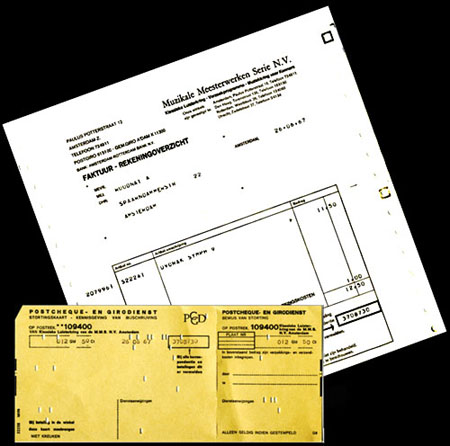 |
|
|
|
Sound Quality and Number of Pressings In early advertisements Concert Hall Society promised that "This recording was issued in a LIMITED EDITION of only 3,000 copies, of which this is number ...." No more than 3000 copies will be pressed of a specific record. They obviously mean that for every new batch of 3000 records a new plate will be used. The statement suggests that other manufacturers press more than 3000 records using the same plate. There are of course companies that did so. Remington Records is an example. But the technicians and production managers of companies that produce quality records of classical music and jazz know that in principle no more than 1500 or 2000 records at the most should be pressed using the same plate. Quality control is the only way to determine if a plate can be used for another few hundred records. The rule is if more records are pressed, the matrix will get dull and the records will sound adequately. It is possible to compensate for the loss of high frequencies and detail by applying equalization, by boosting the high frequency content and cut a disc with restricted dynamics resulting in a lean bass. In that way more music can be engraved per side and the high frequencies will be more prominent. Choosing a vinyl compound with a specific hardness can also give the suggestion of high fidelity when played on simple gramophones. The measures taken are audible in the final product. Most certainly in the records of Musical Masterpiece Society with its 450.000 members worldwide. Amplifier Tone Controls Already in the early Concert Hall LP days, when the discs were listed in catalogs and were reviewed in magazines, the music critics had much to say about the quality of the recorded sound, the orchestras and the final product spinning on their turntables. Sometimes the quality of the work of the recording technician, the pressings and the quality of the playing of musicians were confounded. But in general most knew well what they were writing about and were not always pleased with the Concert Hall discs. However in those days amplifiers had tone controls for bass and treble which often had to be used generously. An example. When reviewing The Orchestral Suites of Tchaikovsky, well directed by Walter Goehr, High Fidelity Magazine's J.F. Indcox wrote: "Concert Hall's sound is rather undernourished, lacking in resonance, and the balance is not always ideal." Praise Walter
Goehr conducted Suites Nos. 1 (CHS 1121) and 2 (CHS 1122) with the Winterthur
Symphony. There existed already a Westminster recording of Suite No.
3, therefor the Winterthur SO was renamed Concert Hall Symphony Orchestra
for the Third Suite (CHS 1144). While the reviewer's description applied
to the recordings of the Suites, the same quality could be encountered
on several other Concert Hall discs with symphonic music and concertos.
Chamber music recordings often favor a better sound. In High Fidelity
magazine of December 1957 Harold C. Schonberg wrote about Schumann's
Piano Quintet on MMS 41: "On a much cheaper 10 inch disc, Hannes
Kann and the Pascal Quartet offer a well recorded, spirited performance
that is without eccentricity. I would put this in a best-buy category."
See also Exit MMS From
1956 on the Concert Hall label is no longer available in Europe.
|
Shown above is the Japanese Concert Hall Society release of Hungarian Rhapsodies (Franz Liszt) conducted by Hans Swarowsky.
|
|
|
|
|
|
|
Binaural Stacked Reel To Reel Tapes From
September 1956 on High Fidelity Magazine started publishing reviews of
pre-recorded reel to reel tapes. In that section Concert Hall tapes (now
issued by Crowel Collier) are also mentioned and often get positive reviews
in case the sound quality is good and/or the performance is noteworthy.
An example, in the issue of July 1957, Symphony No. 2 of Brahms in the
performance of the Frankfurt Opera Orchestra conducted by Carl Bamberger,
receives praise and is more or less preferred over the RCA Charles Munch
recording. The Frankfurt Orchestra is less accurate, but Bamberger's performance
is more individual, provocative, and dramatic. The Concert Hall recording
gives "a boldly sculptured delineation" as the reviewer writes.
Philippe Entremont's recording of Piano Concerto No. 2 is another release
on tape. It was recorded before Entremont joint CBS (Columbia). There
were other issues on tape. A few will be added later.
This reel contains the binaural (stereophonic) Concert Hall edition of Piano Concerto No. 2 of Franz Liszt performed by Philippe Entremont and the Radio Zurich Orchestra conducted by Walter Goehr. The reference number is CHT/BN-6. According to Discogs this recording was released in 1959.
|
|
|
|
|
|
|
|
|
|
|
|
|
. The later Varieton edition of the same recording with the same reference number entitled KREISLER'S OLD VIENNA |
|
|
|
|
|
Instrumentalists,
Singers, Ensembles,
The
Pascal String Quartet
"The
biggest operation is in West Germany.
|
 |
 |
|
Ray
Lev - Pianist
|
Walter
Goehr - Conductor (Photo: MMS) |
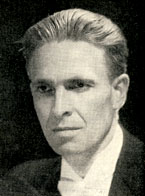 |
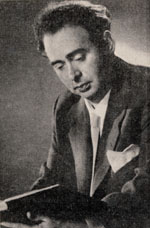 |
|
Jack
P. Loorij - Conductor
|
Otto
Ackermann - Conductor
|
|
|
 |
|
Carl
Bamberger - Conductor (Photo: MMS)
|
Carl
Schuricht - Conductor
|
 Ricardo
Odnoposoff - Violinist
Ricardo
Odnoposoff - Violinist(Photo: Fayer, Vienna) |
 |
|
Grant Johannesen - Pianist
(Photo MMS) |
|
 |
 |
|
Louis
Kaufman - Violinist (Photo: Concert Hall)
|
David
Josefowitz - Violinist, Conductor, Producer (Photo: Concert Hall)
|

|

|
| Ignace Neumark - conductor (Photo Atelier Frans Hals, Den Haag, 1927) | Toon Verhey (image Radio Encyclopedie) |
|
Utrecht
Municipal Orchestra (Utrechts Stedelijk Orkest, originally written as
"Orchest" with "ch").
For several recordings the Radio Philharmonic Orchestra of the Dutch
Broadcasting Union (NRU - Nederlandse Radio Unie) was renamed Netherlands
Philharmonic Orchestra for the occasions when recording for MMS. This
was Paul van Kempen's ensemble. |
| Walter Goehr conducting the London Symphony Orchestra. Note the interior of a church. There are monitor loudspeakers in the background and there is a microphone on a stand. (Photo: Concert Hall, edited by R.A.B.) |
 |
| Three conductors taking their bows in 1949: Victor Desarzens (Concert Hall/MMS) with Hans Rosbaud (left; Deutsche Grammophon and Philips) and Ernest Bour (right). (Image edited by R.A.B.) |
 |
 |
 |
|
Artur
Balsam - Pianist
(Photo: l'Oiseau Lyre) |
|
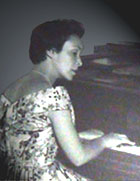 |
 |
|
Livia
Rev - Pianist
(Photo: Pathé) |
Vlado
Perlemuter - Pianist
(Photo: Concert Hall) |
 |
 |
|
Hans
Swarowsky - Conductor
(Photo Dutch HMV-Bovema) |
Cora
Canne Meyer - Mezzo-soprano
(Photo Dutch HMV-Bovema) |
 |
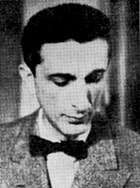 |
|
Pierre
Michel Le Conte - Conductor
|
Gianfranco
Rivoli - Conductor
(Photo: Concert Hall Society) |
 |
 |
|
Pierre
Fournier - Cellist
(Photo: Erich Auerbach) |
Alexander
Krannhals - Conductor (image taken from a Dutch publication).
|
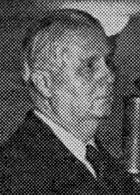 |
|
|
|
|
 |
 |
| Annette de la Bije - Soprano |
Theo
Olof - Violinist
(Image "Mens en Melodie") |
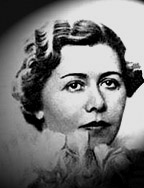 |
|
|
 |
 |
|
Frank
Pelleg - Pianist/Harpsichordist
(Photo: Pye Records, 1964) |
Friedrich
Gulda - Pianist
(Photo RCA, 1954) |
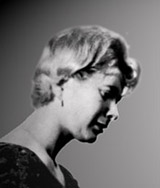 |
 |
|
Sondra
Bianca - Pianist
Edited image taken from her Schumann LP 30 MT 10.127 |
Carl
Schuricht - Conductor
|
 |
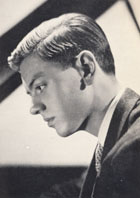 |
|
Lili
Kraus - Pianist
(Image taken from "Radio Encyclopedie", 1949) |
Philippe
Entremont - Pianist
(Photo: Concert Hall Society) |
 |
 |
|
Paul
Hupperts - Conductor
|
Paul
Kletzki - Conductor
|
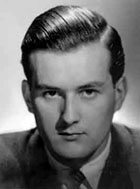 |
 |
|
|
Henk
Spruit - Conductor
|
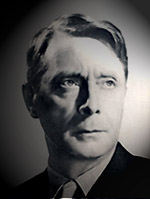 |
 |
|
Charles
Munch - Conductor
|
|
 |
 |
|
Boyd
Neel - conductor
(Photo: Concert Hall Society) |
Benedict
Silbermann
(also written as Silberman) - conductor (Image taken from "Radio Encyclopedie", 1949) |
 |
 |
|
Bernard
Greenhouse- Cellist
(Photo: Mike Evans/ Philips Records) |
Menahem
Pressler - Pianist
(Photo: Mike Evans/ Philips Records) |
 |
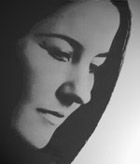 |
|
Peter
Rybar
- Violinist
|
Israela
Margalit - Pianist (Edited image taken from a Concert Hall cover)
|
 |
 |
|
Julius
Patzak
(Photo MMS) |
Gladys
Kuchta (Photo MMS)
|
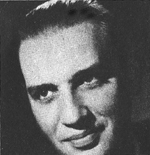 |
 |
|
Heinz
Rehfuss
(Photo MMS) |
Melitta
Muszely (Photo MMS)
|
|
In the Spring of 2011 John Hunt published the Concert Hall Society discography: conductors, singers, instrumentalists, labels, reference numbers, and - if known - recording venues and dates. |
|
Advertisement
Click on the Image for More Info
Research and text by Rudolf A. Bruil.
Page
first published on the web on August 11, 2010.
The paragraph about pianist Menahem Pressler was added on November 20, 2011.
WILLEM
MENGELBERG AND BACH'S ST. MATTHEW PASSION
GOLD FOR BERNARD HAITINK: 50 YEARS WITH THE ROYAL CONCERTGEBOUW
ORCHESTRA
VIOLINIST/VIOLIST PAUL GODWIN
/ WIM DE HAAN -
EEN HERINNERING
MARIE-CLAIRE ALAIN
/ MERCURY LIVING PRESENCE
/ BACK TO AUDIO & MUSIC BULLETIN
THE UNIVERSAL RECORD STABILIZING RING / THE REMINGTON SITE
CARTRIDGE AND TURNTABLE ADJUSTMENT / PROFESSIONAL
RECORD CLEANING
SUBMIT YOUR 10 DESERT ISLAND DISCS / LONG PLAYING RECORD GUIDE
CONTEMPORARY
RECORDS - Lester Koenig
|
|